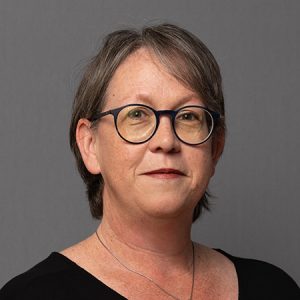Sep. 26, 2023

Story by Gracie Hedenberg
Devanshi Patel knows what it’s like to live through a pandemic in Missouri.
As someone who graduated from high school in Wentzville, Missouri, and started at Mizzou in 2020, Patel observed the state’s mask mandates, gathering restrictions and public health responses. Little did she know she’d be researching these same phenomena for a pandemic a century prior.
She spent the summer working with Carolyn Orbann, an associate teaching professor in the Department of Health Sciences, to write the introduction to a research manuscript on the 1918 flu pandemic. The flu pandemic swept the world starting in February of 1918 and affected Missouri in the fall and winter of that year. As the world fought the virus, soldiers fought in World War I.
Mizzou contributed to the American war effort by hosting the Student Army Training Corps. The contingent was intended to study at Mizzou and then get drafted together, but they arrived on campus in October 1918 — and the war ended before they went to the battlefield.
Because of this military presence at Mizzou, Columbia has a detailed chronicle of the area’s pandemic response. Digitized records of old issues of the Columbia Missourian as well as Missouri death records also contribute to the excellent documentation. Together, they provide insight into medical progress, community attitudes and public health practices.
Patel uses these resources to piece together background information to support the data previous interns already compiled. By combing through articles and death records, she has been able to create graphics and timelines to show the progression of the flu pandemic.
“A lot of the information is stored in different places, so it’s hard to visualize everything that happened in the fall and winter of 1918,” she said. “I started to put together graphics to be used in presentations, which really helped organize my own thoughts for the manuscript.”
Pandemic parallels
Patel’s portion of the overarching research project focuses on the community actions related to the flu: What did schools do? When there were huge gatherings in town, what kind of warnings did the newspaper give? When did they announce that Columbia residents should start wearing masks?
The parallels between the COVID-19 pandemic and the 1918 flu pandemic might seem surprising, but they were part of the motivation for the research. Dr. Orbann’s research focuses on improving public health approaches to future pandemics using historical information.
“For me, researching and sharing my findings about past pandemics helps us to build connections with past populations,” Dr. Orbann said. “It helps us to feel better in a time of uncertainty and potentially even use public health tools more effectively than in the past.”
The patterns between the two pandemics are not always obvious. Part of Patel’s work involved examining both events and looking for similarities in behavior from people as well as the university.
“In Boone County during the 1918 pandemic, we saw many of the same fears, actions and reactions that we saw in 2020 during the COVID pandemic,” Dr. Orbann said. “The university closed early for the semester; churches, public schools and theaters closed or had occupancy limits; mask mandates were in place. Most people in 2020 didn’t know how similar their experiences were to those of 1918 Columbians.”
A penchant for problem-solving
In putting together the manuscript, Patel has seen the most significant skill growth in her communication abilities and resilience. So much can go wrong in research — and unexpected discoveries can emerge — but Patel says problem-solving abilities spark growth in those moments.
“There’s a lot you can learn in research that you can’t learn in a classroom,” she said. “The labs we take for class are very controlled, but in research a million things don’t go the way you expect. Even when one thing goes right, it’s all the ways that it didn’t go how you intended that are the learning experiences.”
Overcoming challenges and clearing hurdles to find information is only part of the job, though. Research combines problem-solving with effective communication. It’s equally essential to relay research results in ways that others can understand, whether it’s in the form of presentations, posters or publications.
Though this is Patel’s first experience in research dealing with history, she has been involved in lab research for the past four years; she has worked in chemistry labs at Mizzou and the University of Missouri- St. Louis. Both experiences taught her valuable skills, but the medical side particularly caters to her problem-solving talents.
“I love solving puzzles, logic problems, things like that,” she said. “That’s my jam. It’s definitely one of the things that drew me to medicine.”
Once she graduates from Mizzou with her bachelor’s degree in Health Science, Patel plans to attend medical school to become a primary care physician. Patel intends to continue with research as long as she can, especially throughout medical school. As a physician, she said those research skills should help her stay updated on progress in the medical community to adopt new treatments and learn more about different diseases.
